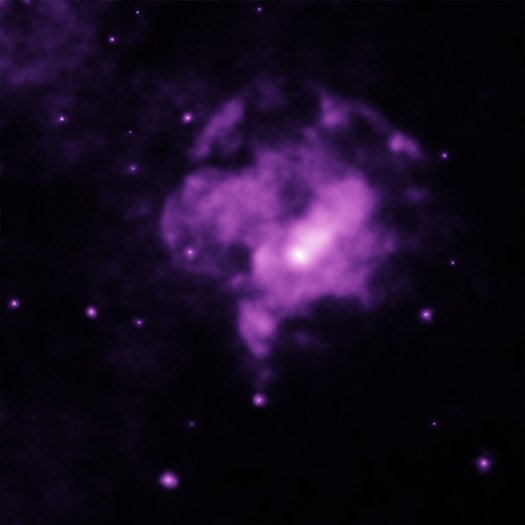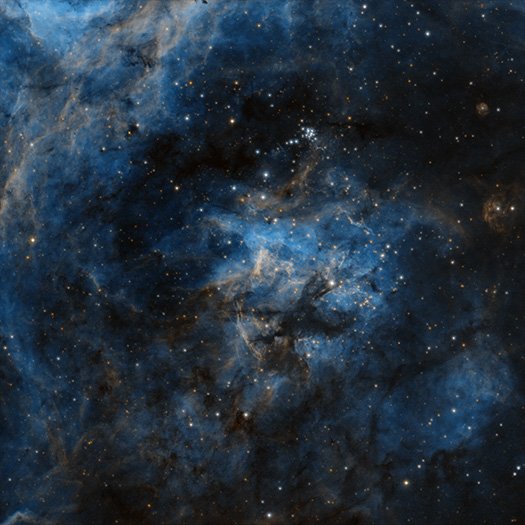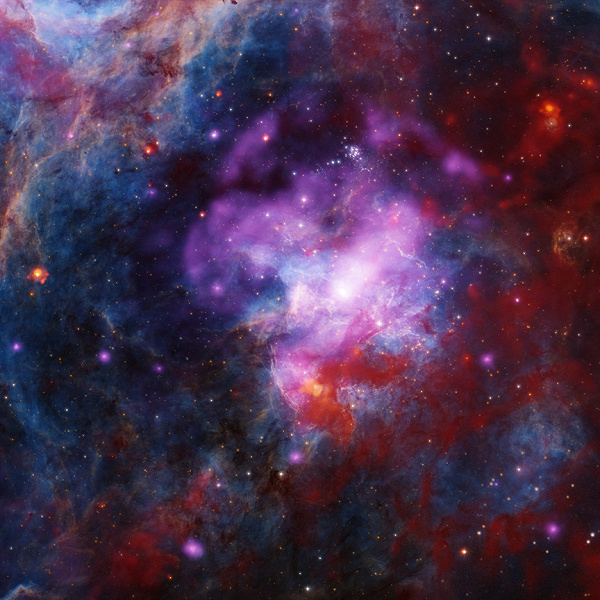The mysterious past of region 30 Dor B: How multiple supernova explosions determined its shape
This bright and colorful image reveals a variety of spectral views from the remains of not one, but at least two exploding stars.
This supernova remnant, known as 30 Doradus B, is part of a vast region of space where stars continue to be born and form for 8-10 million years. Located 160 thousand light years from Earth in the Large Magellanic Cloud galaxy — satellite of the Milky Way, this region is a mixture of gas clouds, young stars and the effects of explosions.
The image of 30 Dor B was created by combining data obtained by the Chandra X-ray telescope. (purple color), optical data from the «Blanco» telescope 4 meters in diameter in Chile (orange and blue) and infrared data from the Spitzer Space Telescope. (Red color). Optical data from the Hubble Space Telescope was also added. for more accurate display of details.

A team of astronomers led by Wei-An Cheng from National Taiwan University in Taipei recorded more than two million seconds of observations using Chandra. to explore the 30 Dor B region and its surroundings. They discovered a faint X-ray envelope extending over a distance of about 130 light-years (by comparison, the closest star to the Sun is about 4 light-years away). In addition, data from «Chandra» showed streams of particles emanating from a pulsar, which creates the so-called pulsar nebula.

Data Analysis «Hubble» and other telescopes allowed the researchers to conclude that not a single supernova event can fully explain the observed phenomena. The bright X-ray emission and presence of a pulsar at the center of 30 Dor B are likely due to the collapse of a massive star that occurred approximately 5,000 years ago. However, the larger, fainter shell of X-ray light is too large to be the result of a single explosion.
Scientists believe that 30 Dor B experienced at least two explosions, and the X-ray shell was created by another event that occurred more than 5,000 years ago. It is also possible that not all events were taken into account in this study and that even more similar outbreaks occurred in the past in the 30 Dor B region.
These research results will allow astronomers to better understand the life cycle of massive stars and the consequences of their explosions.

